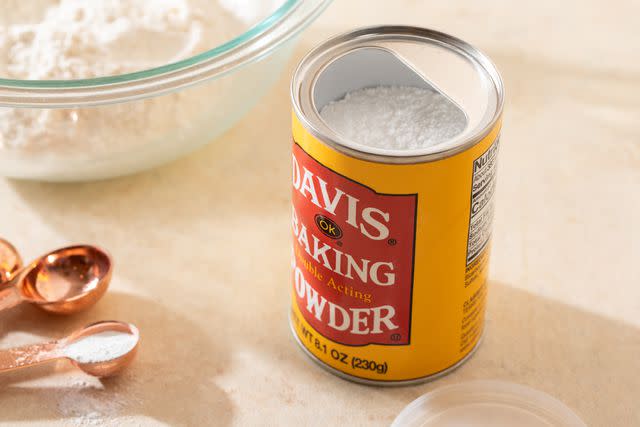The 1-Ingredient Upgrade for Better Roast Chicken (It’s Already in Your Pantry)
Skin so crisp, you’ll wonder if it was fried.

Simply Recipes / Getty Images
Of the handful of meals I’ve learned to make over the years that never disappoint, roast chicken is at the top of the list. It's got a lot going for it. First, I’ve never met a meat-eater who didn’t like a classic roast chicken. It's easy enough to make on a busy weeknight and nice enough to serve for an elegant dinner.
Plus, it’s a meal that keeps on giving. My family prefers to eat the breast meat thinly sliced when first roasted. Then I shred the dark meat to use in meals throughout the week like enchiladas, chicken soup, chicken salad, and more. Last but certainly not least, I use the carcass for stock, which I stash in my freezer for soups, stews, and risotto during the colder months.
I think learning the (very easy) art of roasting a chicken is one of the most important cooking skills you can teach yourself. The chicken should be well-seasoned, cooked through but not dry, and arguably the most imperative quality, the skin should be crispy. While high heat and a little neutral oil or butter can yield pretty tasty chicken skin, there is one ingredient in your pantry right now that will produce the crispiest bird you’ve ever tasted: baking powder.
Read More: This Is the Right Place To Store Your Baking Powder

Simply Recipes / Sarah Crowder
Why Use Baking Powder on Your Roast Chicken
To understand why baking powder can be used to crisp up chicken skin as it roasts, let's first talk about dry brining.
Dry brining involves salting chicken (it works on beef and pork too) in advance—ideally 12 to 48 hours before cooking. You simply mix kosher salt with black pepper and a few dried herbs and apply it with a heavy hand all over the surface of the chicken. This sits in the fridge, and that's where all of the magic happens.
The salt first draws out moisture from the surface of the chicken. If you wait a bit more, all of that moisture is reabsorbed by way of diffusion (high school science refresh, anyone?) creating a very concentrated brine made up of its own moisture without impacting the texture of the meat.
Plus, the salt pulls excess moisture away from the skin—drying it—and into the meat, which allows the skin to crisp up faster.
Now we're back to the baking powder: Adding about one teaspoon of baking powder to the dry brine will help dehydrate the skin even further. Also, since baking powder raises the pH level of the skin, it will brown more evenly and will yield skin so crisp, you’ll wonder if it was fried.

Simply Recipes / Getty Images
Why Crisp Chicken Skin Becomes Rubbery
If you think of chicken skin like bacon, it helps to understand that the key to getting it nice and crisp is to render out all of the fat. Sometimes, you may take a bird out of the oven and see gorgeous GBD (golden, brown, delicious) skin, only to be disappointed by rubbery skin after the bird rests.
To prevent this from happening, it’s crucial to give the fat under the skin somewhere to go. I do this in two ways.
Create Pockets: Separate the skin from the meat by using your hands to create a pocket between the breast meat and the skin. Be careful to tear the skin. You can add a physical barrier here, like lemon slices or hearty herbs to give the fat somewhere to go as it renders in the oven.
Dock the Skin: Just like you may dock a pie to release steam and encourage evening browning, if you add a few holes to the skin with the help of a fork or skewer, you give the fat and the steam created as it roasts somewhere to go. Then you're left with crisp skin that stays crispy, even after resting.
It's Worth the Salt (and Baking Powder)
While it may seem like a lot of work to dry brine your bird, the small effort will really pay off. When it comes time to roast the chicken, most of the work is already done for you. As a bonus, you can bore your kids at the dinner table with a science lesson, something every nerdy mom dreams of!
Read the original article on Simply Recipes.


